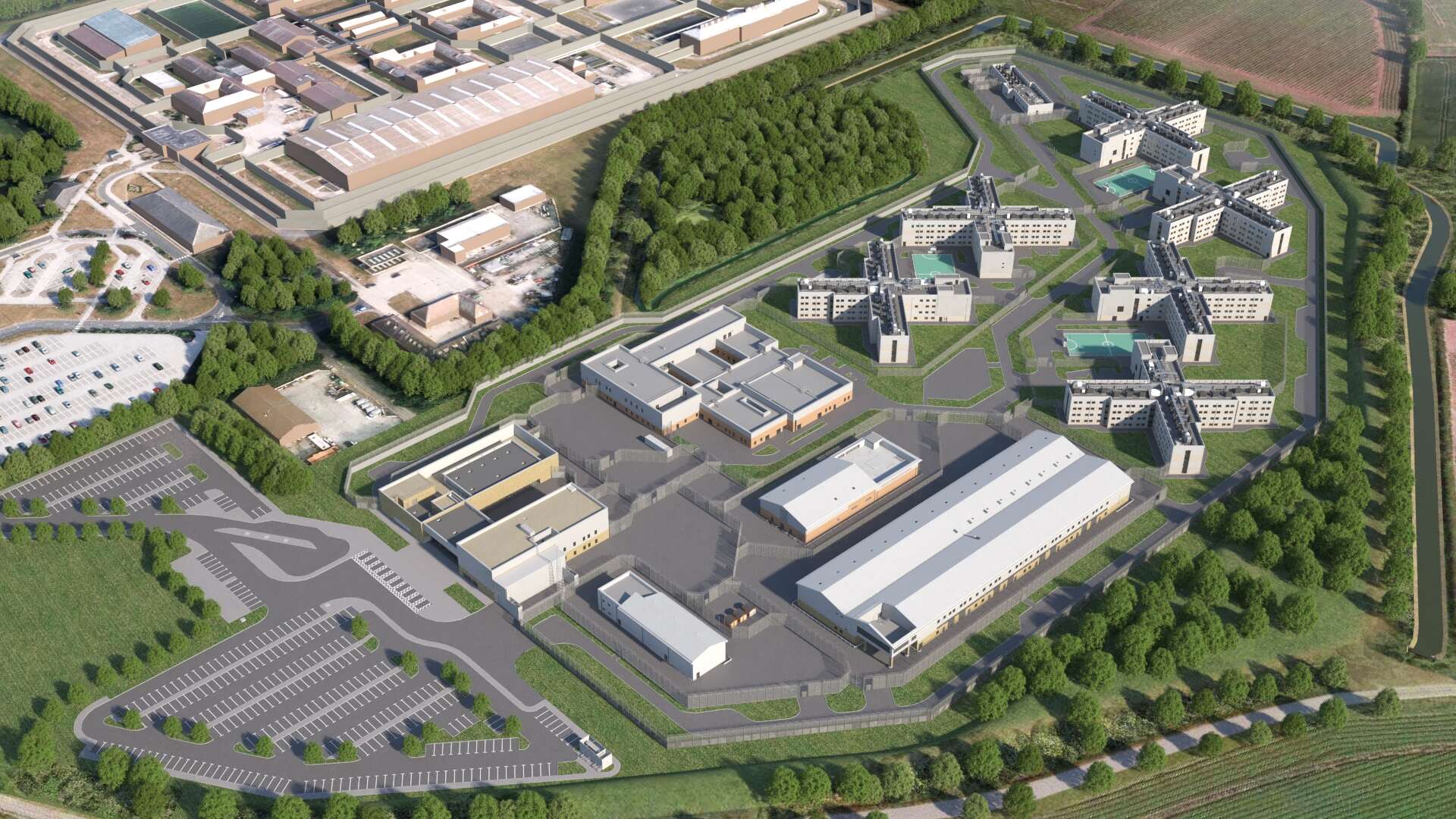
Construction company Kier has been awarded a £400m contract to build a new ‘smart prison’ in Full Sutton, East Yorkshire, starting later this year. The category C prison, designed to help inmates develop skills to help them re-enter society on release, will incorporate digital learning equipment as well as ‘cutting-edge’ security systems and energy infrastructure.
When it opens in 2025, the new facility will be the third ‘smart prison’ in the UK, with plans for three more in the works. The UK follows countries including Finland, the US and China in building smart prison facilities, whose objectives range from aiding rehabilitation to inmate surveillance.

HMP Full Sutton will provide more than 1,400 new inmate places. The government said it will be the first ‘zero carbon’ prison, with an all-electric design, solar panels, heat pumps and more efficient lighting.
The new project is expected to create hundreds of jobs during construction, at least 50 of which have been earmarked for ex-offenders, and a further 600 once the establishment opens, the government said.
“I am delighted work can begin on yet another modern, innovative prison that will skill-up untold numbers of offenders to live a crime-free life while making our streets safer,” said prisons minister Stuart Andrew.
The UK’s first smart prison, HMP Five Wells in Wellingborough, Northamptonshire, opened in March this year. The prison provides in-cell tablets to aid inmate education, the government said.
Security innovations include ‘cutting-edge’ body scanners to identify contraband, and ‘ultra-secure, bar-less’ windows that prevent drones carrying drugs, phones and weapons from entering the facility.
Construction of a second smart prison, at Glen Parva in Leicestershire, is already underway, and locations are being sought for three more. The prisons are part of a £4bn investment in providing 20,000 new prison places.
Rehabilitating inmates in smart prisons
All the smart prisons so far are category C facilities. These are “training and resettlement prisons” that house the majority of inmates. “They provide prisoners with the opportunity to develop their own skills so they can find work and resettle back into the community on release,” according to the prison service.
Digital learning company Coracle supplies secure Chromebooks for use inside UK prisons. According to the company’s founder, James Tweed, giving individual inmates their own devices means they can access tailored learning materials.
“By providing laptops and allowing prisoners to learn in their cells, we can tailor the content to the individual,” Tweed told Tech Monitor. “This approach means prisoners can access a wide range of content, including basic literacy skills, vocational learning, personal development and further education, all the way up to degree level.”
Coracle also offers inmates a CV builder so they can apply for jobs when they leave the prison system, and receive information about disclosing offences when applying for jobs. This helps reduce the risk of reoffending, Tweed argues, which costs the taxpayer an estimated £18bn per year.
Currently, just two in ten offenders are able to find work in the first year of their release, according to research by LinkedIn and the Centre for Economics and Business Research. Within six weeks of release, unemployment rates are as high as 89%, only improving to 44% a year later.
Smart prison planet
Finland has pioneered the use of digital technology in prisons to rehabilitate prisoners, providing inmates with devices in their cells since 2020. Inmates can use these to contact staff and access prison healthcare and other services. Prisoners also have access to a website, Elements of AI, maintained by the University of Helsinki and Reaktor Education, helping them learn about AI.
Most ‘smart prison’ initiatives are focused on making prison operations more efficient. In 2021, Hong Kong opened its first smart prison, Tai Tam Gap Correctional Institution in Shek O, using advanced technologies such as facial recognition and robotics.
“Biometric technology, facial recognition and video analytic monitoring will be used to detect changes in behaviour and send alerts to staff, and drones and robotic guards will be introduced to frequently patrol the prison,” according to the Global Prison Trends 2021 report from Penal Reform International.
In the US, meanwhile, AI-enhanced offender tracking devices, such as ankle bracelets, are in development.
In-prison technologies, such as self-service kiosks and in-cell telephony and laptops, can also help save staff time, according to Penal Reform International. Allowing detainees to self-manage routine tasks saves an average of 91 hours of staff time per prison per week, the NGO found, the equivalent of two prison officers working a full week.






